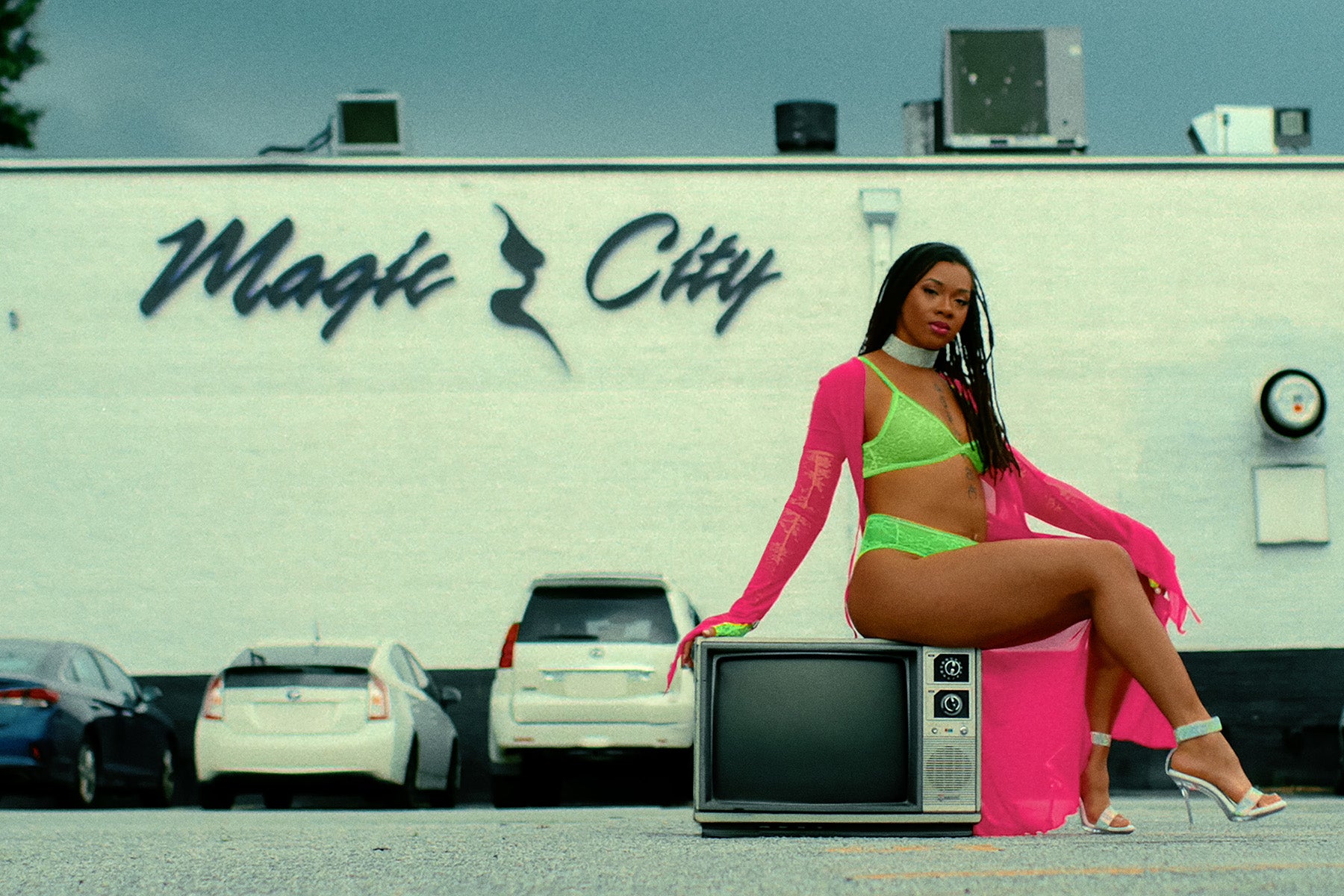For 40 years, Magic City has been more than a strip club—it’s been Atlanta’s compass for cool. To outsiders, it’s an exoticized symbol of the city’s nightlife; to insiders, it’s the “Black Studio 54” of the South, a place where music careers are made, regional trends go national, and the bass-heavy heartbeat of the city finds its rhythm.

But Magic City is not just nightlife—it’s infrastructure. As Magic City: An American Fantasy makes clear, the club is an ecosystem that’s shaped Atlanta’s identity as the hip-hop capital of the world. The five-part STARZ docuseries, premiering August 15, traces the club’s arc from its 1985 opening on Forsyth Street to its role as an economic engine and cultural touchstone. Directed by Charles Todd and created and executive produced by Cole Brown, the series blends archival footage, intimate dancer interviews, and candid commentary from Atlanta rap heavyweights like T.I., Big Boi, 2 Chainz, Killer Mike, Quavo, and Drake.

Jermaine Dupri, who also executive-produced alongside Drake’s DreamCrew Entertainment and Jami Gertz, offers a telling critique: Atlanta has owned hip-hop for the past quarter-century, but its culture has rarely been depicted on screen. Los Angeles and New York have been mythologized through countless films; Atlanta, by contrast, has only ATL, a skating drama from 2006. “I’m just happy to see that Magic City and the strip club culture gets its light,” Dupri says, noting that the documentary spotlights not just Magic City but the network of clubs that have shaped the city’s nightlife economy.
That economy has long blurred the lines between art, business, and community. In the pre-streaming era, Magic City dancers were the ultimate A&Rs—testing tracks in real time, their response determining whether a song would fizzle or dominate radio. Killer Mike puts it bluntly: “If the girls ain’t feeling it, it ain’t a hit.”
For the women of Magic City, the stage is a platform and a proving ground. The docuseries centers their voices, showing how artistry, athleticism, and entrepreneurship collide under the spotlight. Many of the dancers featured agreed to appear for the first time on camera, offering rare insight into the dynamics, creative expression, and agency that exist in a world often reduced to stereotypes.

Brown says the dancer narrative was central to shaping the docuseries. It was tempting, he admits, to get caught up in the club’s sexy hip-hop lore and crime stories—cue the BMF and Deion Sanders “Must Be The Money” eras—but the heart of Magic City has always been its women. “There were certain names that kept coming up, and we wanted to make sure we represented the dancers from every era,” he tells ESSENCE. In the ’80s, that meant icons like Strawberry and Platinum; by the 2000s, it was Gigi McGuire, White Chocolate, and OG India—whose presence and influence still loom large in the club’s history, even if they’ve since left the stage. Followed by the women of today, who, if you stepped into the club right now, you’d see commanding the stage.
Building trust with these performers required time and care. “A lot of these women, I’ve met their kids, they’ve met my family,” Brown says. “We spent a lot of time so that they knew that their stories would be handled with the care and responsibility that it deserved.”
Where American Fantasy sets itself apart from a glossy nostalgia trip is in its refusal to romanticize without context. The series celebrates the opulence—platinum plaques, celebrity-filled nights, and the surreal fact that “Whoomp! (There It Is)” was sparked by the club’s atmosphere—but also confronts the industry’s underbelly: exploitation, violence, and the high turnover of a career that is physically and emotionally taxing. Dupri himself admits he was surprised to learn how changes to Atlanta’s nudity laws in the late ’80s sparked an explosion of new clubs.

The film also situates Magic City within a distinctly Southern lineage. In Houston, Miami, and Memphis, strip clubs serve as music venues, networking spaces, and community hubs. Atlanta refined the model, making them as essential to an artist’s career as radio spins or streaming playlists. “If you go to Magic City at 4 p.m. on a Tuesday, you’ll see people there having a business lunch,” Brown says. Unlike Las Vegas, where strip clubs often carry a “sin” connotation, or other cities where the focus is purely on sex, Atlanta’s clubs, Brown explains, are places to congregate, connect, and conduct business.
That centrality has turned Magic City into both a local landmark and a global export. For Dupri, its influence is undeniable: “For the last 40 years, the strip clubs have been just as important as anything else that happens in Atlanta.”
Through its timeline storytelling, Magic City: An American Fantasy unfolds like a Southern epic—moving from the grit of its early years to the champagne-soaked heights of the mid-2000s, to a present day where its legacy is both celebrated and questioned. The club’s story is ultimately about transformation: of music, of a city, and of a culture that turned its underground into the mainstream.
Magic City is more than a fantasy—it’s a lens through which to view Atlanta’s evolution over four decades. In telling its story, this series captures something bigger: the way a city can turn its underground into the mainstream, and in doing so, change the culture far beyond its borders.
Magic City: An American Fantasy premieres August 15 at 10 p.m. ET/PT on STARZ, with new episodes Fridays at 9 p.m. ET/PT.
